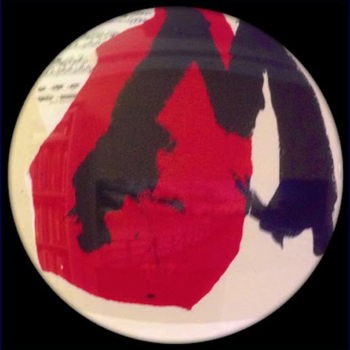Harold Robert Meyer | The ADD Resource Center 06/13/2025
Executive Summary
The handshake, a gesture as ancient as it is ubiquitous, remains a cornerstone of human interaction. Far more than a mere formality, a well-executed handshake is a powerful tool of non-verbal communication, capable of conveying confidence, trust, and respect in a matter of seconds. This article delves into the intricacies of the handshake, offering a comprehensive guide to its proper execution, the opportune moments for its use, and the profound messages it can transmit. From the subtle nuances of grip and eye contact to the psychological underpinnings of this seemingly simple act, you will learn how to master the handshake and, in doing so, enhance your personal and professional relationships. We will explore the various types of handshakes and their meanings, navigate the complexities of handshaking in different cultural contexts, and provide actionable advice for making every handshake a positive and memorable interaction.
Why This Matters
In an increasingly digital world, the significance of physical touch in building genuine connections cannot be overstated. The handshake is often the first and only form of physical contact in a professional or formal social setting, making it a critical moment in forming a first impression. A handshake can set the tone for an entire interaction, influencing perceptions of your character, competence, and reliability. For sophisticated readers who understand the importance of nuance in communication, mastering the handshake is not just about etiquette; it is about leveraging a powerful social skill to build rapport, foster trust, and communicate effectively without saying a word. Understanding the “how, when, and why” of this gesture can provide a distinct advantage in business negotiations, networking events, and everyday social encounters.
Key Findings
- The Anatomy of a Perfect Handshake: A successful handshake is a symphony of non-verbal cues. It involves a firm but not crushing grip, web-to-web contact, a vertical hand position, and a duration of approximately three seconds. This is accompanied by confident body language, including standing tall, making eye contact, and offering a genuine smile.
- Timing is Everything: Knowing when to initiate a handshake is as important as the handshake itself. Key moments include meeting someone for the first time, greeting a host or guest, concluding a business deal, and saying farewell. In formal settings, the person of higher rank typically initiates the gesture.
- The Psychology of the Shake: A handshake can reveal much about a person’s personality and intentions. A firm grip is often associated with extraversion and confidence, while a weak one may suggest insecurity. Different styles, such as the “double-hander” or the “dominant palm-down” shake, carry distinct psychological meanings.
- Cultural Considerations: While the handshake is widely practiced, its execution and meaning can vary significantly across cultures. What is considered a confident grip in one country may be seen as aggressive in another. Awareness of and adaptation to these cultural norms are crucial for effective international communication.
- The Neurological Impact: The act of shaking hands can trigger the release of oxytocin, a hormone associated with bonding and trust. This neurological response underscores the handshake’s role in building rapport and fostering a sense of connection.
The Art of the Handshake: How to Do It Right
The handshake is a dialogue without words. To ensure you are communicating the right message, attend to the following elements:
The Approach
Your handshake begins before your hands ever touch. As you approach the other person, stand tall with your shoulders back. Maintain an open and confident posture. Keep your right hand free; if you are carrying items, shift them to your left hand. This signals your readiness to connect.
The Grip
Extend your hand with your thumb pointing upwards and your fingers together. Aim for web-to-web contact, where the fleshy part between your thumb and index finger meets the same part of the other person’s hand. Your grip should be firm, conveying confidence and engagement. A good rule of thumb is to match the pressure of the other person. Avoid a “bone-crusher,” which can be perceived as aggressive, or a “limp fish,” which can signal disinterest or weakness.
The Motion and Duration
A proper handshake is a brief, smooth motion from the elbow, not the shoulder or wrist. Two to three gentle pumps are sufficient. The entire gesture should last about three seconds. Lingering too long can create awkwardness, while a fleeting touch may seem dismissive.
Eye Contact and a Smile
As you shake hands, make direct eye contact and offer a genuine smile. This combination conveys sincerity, warmth, and trustworthiness. Your facial expression is as much a part of the handshake as the physical touch itself.
The Parting
Release the other person’s hand cleanly and return to a natural stance. A nod of the head can provide a graceful conclusion to the gesture.
When to Shake Hands: Seizing the Moment
Knowing the opportune moments to offer your hand is a hallmark of social intelligence. Here are some common scenarios:
- Introductions: When you are being introduced to someone, or when you are introducing yourself, a handshake is standard practice.
- Greetings and Farewells: Shake hands when greeting a host at a social event, a client at a meeting, or an old friend. A handshake upon departure is also a courteous way to conclude an interaction.
- Business Settings: In the professional realm, handshakes are ubiquitous. They are used to greet interviewers, welcome new colleagues, and seal agreements. In a hierarchical setting, it is customary for the person with higher seniority to initiate the handshake.
- Expressing Congratulations or Condolences: A handshake can be a powerful way to convey sincere emotion, whether you are congratulating someone on an achievement or offering comfort in a time of loss.
For individuals who may find social cues challenging, such as some with ADHD, having a clear set of guidelines for when to shake hands can be particularly helpful. The ADD Resource Center (ADDRC.ORG) emphasizes the importance of observing your environment for clues on appropriate behavior. When in doubt, a simple rule is to extend your hand when you are meeting someone for the first time in a professional or formal social context.
The Meaning Behind the Gesture: What a Handshake Conveys
A handshake is a rich tapestry of non-verbal cues, each thread contributing to the overall message you send.
Confidence and Competence
A firm, confident handshake is often interpreted as a sign of a self-assured and capable individual. In a business context, this can translate to perceptions of competence and reliability.
Trust and Rapport
The physical connection of a handshake can foster a sense of trust and rapport. The release of oxytocin, the “bonding hormone,” during positive physical touch reinforces this feeling of connection on a neurological level.
Respect and Equality
Offering a handshake is a gesture of respect. When you stand to shake someone’s hand, you are acknowledging their presence and importance. A vertical handshake, with neither palm facing up (submissive) nor down (dominant), communicates a sense of equality and mutual respect.
Empathy and Sincerity
A warm and genuine handshake, coupled with sincere eye contact, can be a powerful expression of empathy. The “two-handed handshake,” where your left hand clasps the other person’s, can convey a deeper level of warmth and sincerity, though it is best reserved for those with whom you have an established relationship.
Resources
- The ADD Resource Center: https://www.addrc.org/
- The Emily Post Institute: https://emilypost.com/
Disclaimer:
Our content is intended solely for educational and informational purposes and should not be viewed as a substitute for professional advice. While we strive for accuracy, we cannot guarantee that errors or omissions are absent. Our content may utilize artificial intelligence tools, which can result in inaccurate or incomplete information. Users are encouraged to verify all information independently.
© 2025 The ADD Resource Center. All rights reserved. Content is for educational purposes only and should not replace professional advice. Privacy Policy | Terms of Use
About The ADD Resource Center
Your partner in understanding and growth. We provide evidence-based support for individuals, families, and professionals through
personalized guidance and comprehensive resources.
Stay Connected. Join our community of learners and advocates, and subscribe to our newsletter for the latest resources and insights.
Subscribe to our newsletter
Email: info@addrc.org
Facebook | Twitter | LinkedIn | Substack
Please Share This Article
 | Harold Robert Meyer The ADD Resource Center, Inc. 646/205.8080 HaroldMeyer@addrc.org 215 West 75th Street New York, NY 10023-1799 USA |

